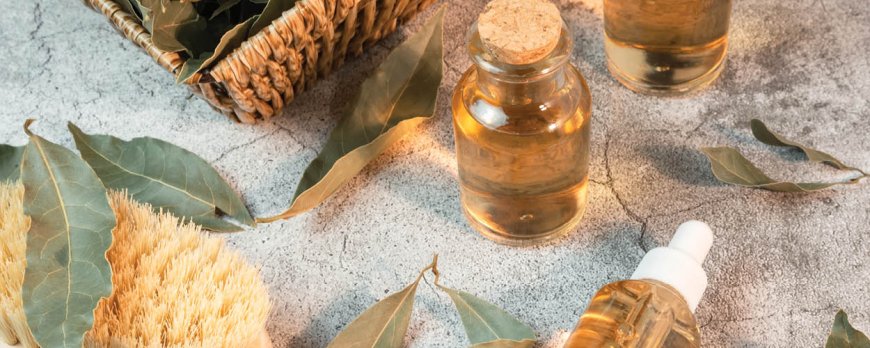What does bad acne look like?
Uncover the visual clues of bad acne. Our guide on 'What does bad acne look like?' provides an in-depth exploration. Find clear skin solutions today!
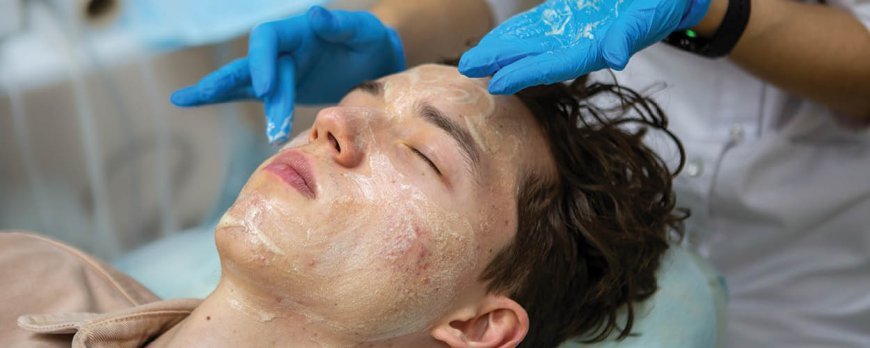
What does bad acne look like?
Bad acne can manifest in various forms and severity levels, and its appearance can serve as a symptom of underlying skin conditions. Noninflammatory acne, such as blackheads and whiteheads, typically does not cause swelling and can be treated with over-the-counter products containing salicylic acid. Inflammatory acne, on the other hand, includes red and swollen pimples, papules, pustules, nodules, and cysts. Inflammatory acne can be painful and may require stronger treatments, like benzoyl peroxide or oral/topical antibiotics prescribed by a dermatologist. Nodules and cysts are the most severe forms of acne and may need prescription medication or surgical removal. Severe acne can also lead to scarring. If self-care remedies do not improve acne or if acne is severe, it is important to seek medical treatment.
Key Takeaways:
- Bad acne can appear in different forms and severity levels.
- Noninflammatory acne includes blackheads and whiteheads.
- Inflammatory acne features red and swollen pimples, papules, pustules, nodules, and cysts.
- Nodules and cysts are the most severe forms of acne.
- Severe acne can result in scarring.
Noninflammatory Acne
Noninflammatory acne, such as blackheads and whiteheads, are common manifestations of bad acne that do not cause swelling. These types of acne occur when hair follicles become clogged with oil, dead skin cells, and bacteria. Blackheads are open comedones that appear as small dark spots on the skin, while whiteheads are closed comedones that appear as small, flesh-colored bumps.
To treat noninflammatory acne, over-the-counter products containing salicylic acid can be effective. Salicylic acid helps unclog pores, reduce oil production, and exfoliate dead skin cells. When applied regularly, these products can help prevent new blackheads and whiteheads from forming.
If over-the-counter treatments are not producing desired results, it may be necessary to consult a dermatologist. They can prescribe stronger topical medications, such as retinoids or benzoyl peroxide, to help control noninflammatory acne. In some cases, oral antibiotics may be recommended to reduce inflammation and kill bacteria. Dermatologists can also perform procedures like extraction to remove stubborn blackheads and whiteheads.
Self-care Tips for Noninflammatory Acne:
- Cleanse the face twice a day with a gentle cleanser to remove excess oil and impurities.
- Avoid touching or picking at the affected areas, as this can worsen inflammation and lead to scarring.
- Use non-comedogenic moisturizers and makeup products to prevent clogging of pores.
- Protect the skin from sun exposure by using a broad-spectrum sunscreen with at least SPF 30.
- Maintain a healthy diet and drink plenty of water to support overall skin health.
Summary:
Noninflammatory acne, such as blackheads and whiteheads, are common forms of bad acne that do not cause swelling. Over-the-counter products containing salicylic acid can be effective in treating noninflammatory acne. If self-care remedies do not improve the condition, consulting a dermatologist may be necessary for stronger topical medications or oral antibiotics. Practicing good skincare habits, such as gentle cleansing and using non-comedogenic products, can help prevent and manage noninflammatory acne.
Inflammatory Acne: Understanding the Signs and Treatment
Inflammatory acne is characterized by the presence of red and swollen pimples, papules, and pustules, which can be more painful and require stronger treatments. These types of acne lesions occur when the hair follicles become clogged with dead skin cells, excess oil, and bacteria. The inflammation in these acne lesions is caused by the body's immune response to the bacteria, resulting in redness, swelling, and tenderness.
When dealing with inflammatory acne, it's important to understand the different types of lesions that may occur. Papules are small, raised bumps that may feel tender to the touch. Pustules, on the other hand, are similar to papules but are filled with pus. Nodules and cysts, the most severe forms of inflammatory acne, occur when the clogged follicles become deeper and more inflamed. These lesions can be deep, painful, and may even lead to scarring if not properly treated.
To effectively manage inflammatory acne, stronger treatments may be necessary. Over-the-counter products containing ingredients like benzoyl peroxide or salicylic acid can help to reduce inflammation and kill bacteria. However, for more severe cases, prescription medications, such as oral or topical antibiotics, may be required. A dermatologist can assess the severity of the acne and recommend the most appropriate treatment plan.
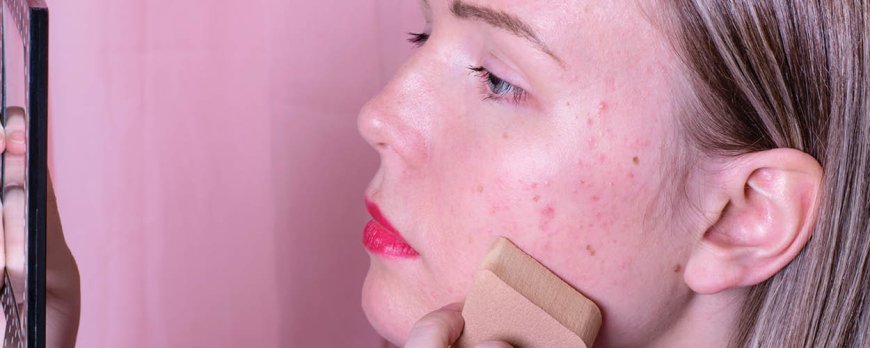
Key Points:
- Inflammatory acne is characterized by red and swollen pimples, papules, and pustules.
- Papules are small, raised bumps, while pustules are similar but filled with pus.
- Nodules and cysts are the most severe forms of inflammatory acne and may require prescription medication or even surgical removal.
- Stronger treatments, such as benzoyl peroxide or oral/topical antibiotics, may be necessary for managing inflammatory acne.
If you're dealing with inflammatory acne and self-care remedies are not improving the condition or if the acne is severe, don't hesitate to seek medical treatment. Early intervention can help prevent further inflammation, scarring, and discomfort. Working with a dermatologist will ensure that you receive the most effective treatment plan tailored to your individual needs, helping you achieve clearer and healthier skin.
Nodules and cysts are the most severe forms of bad acne, often leading to pain and potential scarring, requiring prescription medication or even surgical removal. These deep, inflammatory lesions are characterized by their size and depth beneath the skin's surface.
Signs of nodules and cysts:
When it comes to treating nodules and cysts, over-the-counter products may not be effective. It is crucial to seek professional guidance from a dermatologist. Prescription medication, such as oral antibiotics or isotretinoin, may be necessary to manage these severe forms of acne. In some cases, surgical removal or drainage may be recommended to alleviate pain and prevent further scarring.
If you are experiencing nodules or cysts, it is essential to consult a dermatologist. They can evaluate your condition and provide appropriate treatment options to help you manage and prevent potential scarring.
Nodules and Cysts
Treatment Options
Treating bad acne involves a range of options, from self-care remedies to seeking assistance from a dermatologist, who may prescribe medications like benzoyl peroxide or oral/topical antibiotics. Here are some common treatment options for bad acne:
- Self-care remedies: These include daily cleansing with a gentle cleanser, avoiding harsh scrubbing, and using non-comedogenic moisturizers. Additionally, applying over-the-counter products containing salicylic acid or benzoyl peroxide can help reduce acne symptoms.
- Prescription medications: For more severe cases, a dermatologist may recommend prescription medications such as topical or oral antibiotics to help control bacteria and reduce inflammation. Topical retinoids may also be prescribed to promote cell turnover and prevent clogged pores.
- Professional treatments: In-office treatments like chemical peels, microdermabrasion, or laser therapy may be recommended by a dermatologist to help improve the appearance of acne and reduce scarring.
- Isotretinoin: In severe cases of nodular or cystic acne, isotretinoin, a powerful oral medication, may be prescribed. Isotretinoin works by reducing oil production, unclogging pores, and preventing acne formation.
It is important to note that treatment options for bad acne should be tailored to each individual's specific needs. Consulting with a dermatologist is crucial in determining the most effective course of action based on the severity and type of acne.
Remember, achieving clear skin takes time, patience, and consistency in following the recommended treatment plan. It is essential to follow the prescribed regimen consistently and avoid picking or squeezing acne lesions, as this can lead to further inflammation and potential scarring.
Effects of Severe Acne
Severe acne can have long-lasting effects, including scarring, which can impact an individual's self-esteem and quality of life. The physical appearance of acne scars can be a constant reminder of past breakouts, leading to feelings of self-consciousness and affecting one's confidence in social interactions.
Not only can acne scars be disfiguring, but they can also cause emotional distress, making individuals feel uncomfortable in their own skin. The psychological impact of severe acne and scarring should not be underestimated, as it can lead to low self-esteem, anxiety, and depression.
The potential consequences of severe acne and scarring include:
- Psychological distress
- Reduced self-confidence and self-worth
- Social withdrawal and isolation
- Difficulty forming relationships
- Impaired quality of life
It is essential to address severe acne promptly and seek appropriate medical treatment to minimize the risk of scarring and its associated consequences. Dermatologists can provide personalized treatment plans tailored to an individual's specific needs, including prescription medications, topical treatments, and procedures to reduce the appearance of scars.
Seeking Medical Treatment
If self-care remedies prove ineffective or if you experience severe symptoms of bad acne, it is crucial to consult a dermatologist for appropriate medical treatment. Dermatologists are medical professionals specializing in the diagnosis and treatment of skin conditions, including acne. They have the expertise to assess your condition, determine the underlying causes of your acne, and recommend the most suitable treatment options.
When visiting a dermatologist for acne treatment, they will first evaluate the severity of your acne and identify any contributing factors such as hormonal imbalances or underlying health conditions. Based on this assessment, they may prescribe stronger topical or oral medications to target the inflammation and bacteria associated with acne. These medications can include benzoyl peroxide, retinoids, or oral/topical antibiotics.
In some cases, severe forms of acne, such as nodules or cysts, may require more intensive treatment approaches. Dermatologists may recommend prescription-strength medications like isotretinoin or corticosteroid injections to address these deep-rooted and persistent acne lesions. In certain situations, surgical removal of particularly troublesome nodules or cysts may be necessary.
By seeking medical treatment for your bad acne, you can access professional guidance, specialized treatments, and personalized advice to effectively manage your condition. Dermatologists can monitor your progress, adjust your treatment plan if needed, and help prevent potential scarring or other long-term effects of severe acne. Remember, your dermatologist is your ally in the fight against severe acne, so don't hesitate to reach out for their expertise and support.
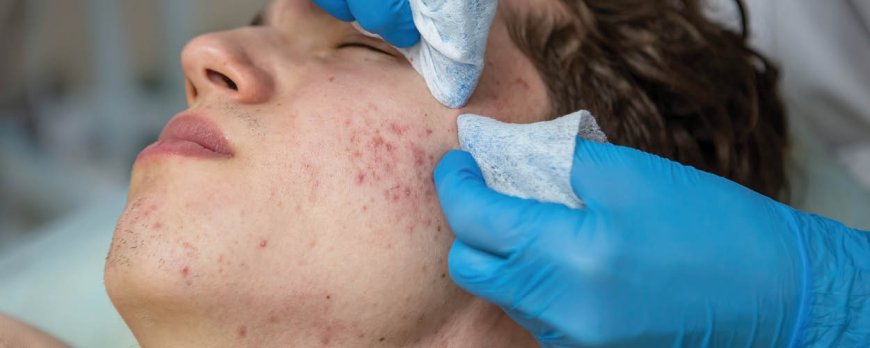
Prevention and Skincare Tips
Taking preventive measures and establishing a well-rounded skincare routine, along with maintaining a healthy lifestyle, can help reduce the likelihood of developing bad acne. Here are some tips to keep your skin clear and blemish-free:
- Cleanse your face twice daily: Use a gentle cleanser to remove dirt, oil, and impurities from your skin. Avoid harsh scrubbing, as it can irritate the skin and lead to breakouts.
- Exfoliate regularly: Exfoliation helps slough off dead skin cells, unclog pores, and prevent the buildup of acne-causing bacteria. Choose a gentle exfoliator that suits your skin type and use it once or twice a week.
- Moisturize daily: Even if you have oily skin, moisturizing is essential to maintain a healthy skin barrier. Opt for oil-free, non-comedogenic moisturizers to avoid clogging your pores.
- Avoid touching your face: Your hands come into contact with various surfaces throughout the day, picking up bacteria and dirt. Touching your face can transfer these impurities onto your skin, leading to breakouts. Be mindful and avoid touching your face unnecessarily.
- Manage stress levels: Stress can trigger hormonal imbalances, leading to increased oil production and breakouts. Engage in stress-reducing activities like exercise, meditation, or hobbies to keep your stress levels in check.
Selecting the right products:
When it comes to acne prevention, choosing the right products can make a significant difference. Look for skincare products that are specifically formulated for acne-prone skin and contain ingredients like salicylic acid or benzoyl peroxide, known for their acne-fighting properties.
- Use non-comedogenic makeup: If you wear makeup, make sure to choose products labeled as non-comedogenic, as they are less likely to clog your pores.
- Avoid excessive sun exposure: While some sun exposure is beneficial for vitamin D production, excessive sun exposure can worsen acne and cause skin damage. Protect your skin by using a broad-spectrum sunscreen with an SPF of 30 or higher.
- Keep your hair clean: Oily hair can contribute to acne breakouts, especially along the hairline and forehead. Wash your hair regularly and avoid using heavy styling products that can clog your pores.
By implementing these preventive measures and incorporating a consistent skincare routine into your daily life, you can take control of your skin health and reduce the risk of developing bad acne. Remember, if your acne persists or worsens, it is always a good idea to consult with a dermatologist for personalized advice and treatment options.
The Role of Diet in Acne
While the relationship between diet and acne is still under research, certain foods have been suggested to potentially exacerbate acne symptoms, while a healthy diet can support overall skin health. Although individual responses may vary, it is worth considering the following when it comes to your diet and its potential impact on acne:
- Dairy Products: Some studies have suggested a link between the consumption of dairy products, particularly high-fat milk and cheese, and the severity of acne. It is speculated that hormones present in dairy may trigger hormonal fluctuations in the body, leading to increased oil production and clogged pores.
- High Glycemic Index Foods: Foods with a high glycemic index, such as sugary snacks, white bread, and processed carbohydrates, can cause a rapid spike in blood sugar levels. This, in turn, may lead to increased insulin production and inflammation, which can contribute to acne development.
- Omega-6 Fatty Acids: While omega-6 fatty acids are essential for the body, an imbalance between omega-6 and omega-3 fatty acids may promote inflammation and worsen acne symptoms. Limiting the consumption of processed vegetable oils, such as corn and soybean oil, and increasing the intake of omega-3-rich foods, like fatty fish and chia seeds, may help maintain a healthier balance.
On the other hand, adopting a healthy diet can provide your skin with the necessary nutrients to support its overall health and potentially reduce acne symptoms:
- Fruits and Vegetables: Incorporating a variety of fruits and vegetables into your diet ensures a rich intake of vitamins, minerals, and antioxidants, which can help combat oxidative stress and promote skin health.
- Healthy Fats: Consuming sources of healthy fats, such as avocados, nuts, and olive oil, can help maintain the skin's moisture levels and improve its natural barrier function.
- Hydration: Staying adequately hydrated allows your body to eliminate toxins more efficiently and may help prevent the clogging of pores. Aim to drink enough water throughout the day to keep your skin hydrated.
While adjusting your diet alone may not completely resolve your acne, it can be a complementary approach to other treatment methods. If you are concerned about the impact of your diet on your acne or are seeking further guidance, it is recommended to consult with a dermatologist or a registered dietitian.
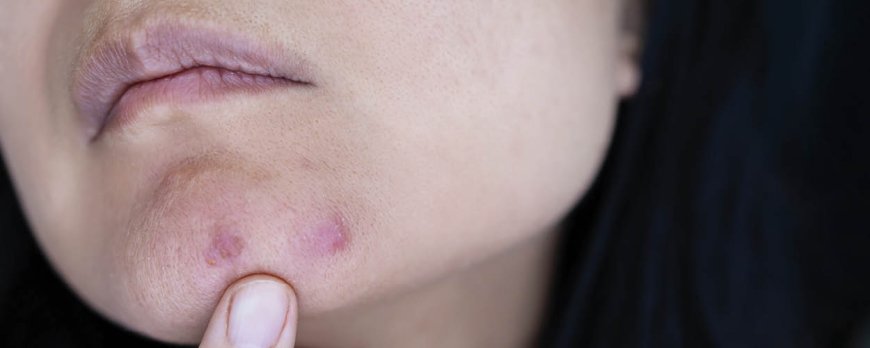
Conclusion
Understanding what bad acne looks like and the available treatment options is essential for managing and improving the condition of severe acne. Bad acne can take different forms, categorized as noninflammatory or inflammatory acne.
Noninflammatory acne, which includes blackheads and whiteheads, does not cause swelling and can be treated with over-the-counter products containing salicylic acid. These products can help unclog pores and reduce the appearance of noninflammatory acne.
Inflammatory acne, on the other hand, includes red and swollen pimples, papules, pustules, nodules, and cysts. Inflammatory acne can be painful and may require stronger treatments, such as benzoyl peroxide or oral/topical antibiotics prescribed by a dermatologist. These treatments target the underlying causes of acne, reducing inflammation and preventing further breakouts.
For those with the most severe forms of acne, such as nodules and cysts, prescription medication or even surgical removal may be necessary. These treatment options should be discussed with a dermatologist, who can provide personalized recommendations based on the severity and type of acne.
Severe acne can also lead to scarring, underscoring the importance of seeking medical treatment if self-care remedies do not improve acne or if acne is severe. By addressing bad acne early on and following appropriate treatment, individuals can minimize the potential long-term effects of severe acne and work towards achieving clearer, healthier skin.
FAQ
What does bad acne look like?
Bad acne can take different forms and can be categorized as noninflammatory or inflammatory acne. Noninflammatory acne includes blackheads and whiteheads, while inflammatory acne includes red and swollen pimples, papules, pustules, nodules, and cysts.
What is noninflammatory acne?
Noninflammatory acne includes blackheads and whiteheads that do not cause swelling. These types of acne can be treated with over-the-counter products containing salicylic acid.
What is inflammatory acne?
Inflammatory acne includes red and swollen pimples, papules, pustules, nodules, and cysts. These types of acne can be more painful and may require stronger treatments, such as benzoyl peroxide or oral/topical antibiotics prescribed by a dermatologist.
What are nodules and cysts?
Nodules and cysts are the most severe forms of acne. They are larger, deep-seated acne lesions that can be painful and may require prescription medication or even surgical removal.
What are the treatment options for bad acne?
Treatment options for bad acne include over-the-counter products, such as salicylic acid-based treatments, as well as stronger treatments prescribed by a dermatologist, such as benzoyl peroxide or oral/topical antibiotics.
What are the potential consequences of severe acne?
Severe acne can lead to scarring, which may be permanent. It is important to address severe acne to prevent long-term skin damage.
When should I seek medical treatment for acne?
If self-care remedies do not improve your acne or if your acne is severe, it is important to seek medical treatment from a dermatologist. They can provide stronger treatments and guidance on managing your acne.
How can I prevent bad acne?
Preventing bad acne involves maintaining a consistent skincare routine, including cleansing your face twice a day and using non-comedogenic products. Additionally, adopting a healthy lifestyle, such as eating a balanced diet and managing stress, can also contribute to preventing acne.
Is there a connection between diet and acne?
While the exact connection between diet and acne is still being studied, some research suggests that certain foods may trigger acne for some individuals. It can be helpful to pay attention to your diet and identify any potential triggers for your acne.
